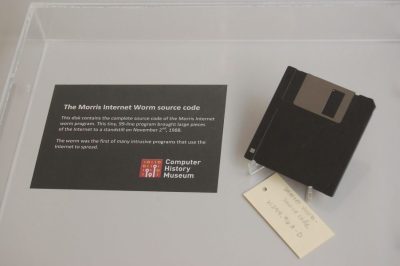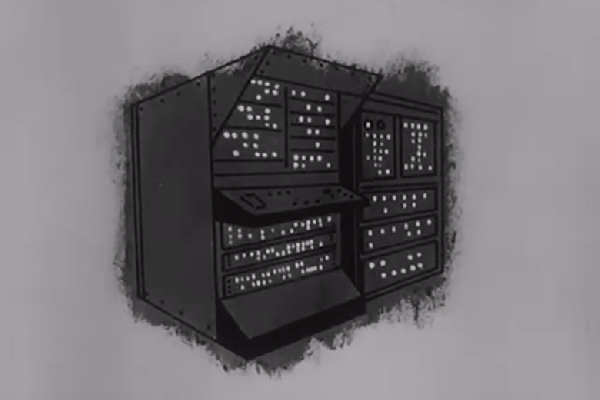Thirty years is a long time to keep a piece of software alive, but there aren’t many pieces of software like NHL ’94 for the Sega Genesis. Despite new annual iterations of publisher Electronic Arts’ NHL hockey video game some players never connected with it like quite like they did in 1994. For years now it’s been a tradition for members of the NHL ’94 forums to incorporate the hockey league’s current players into the Sega Genesis original, however, the work [Adam] contributed this season goes beyond a mere roster update. This NHL ’24 ROM hack is more like a complete overhaul. Everything that was old is new again. Continue reading “NHL ’24 ROM Hack Reimagines Classic Game, Zamboni And All”
Author: Drew Littrell69 Articles
NES Classic Metroid Ported To Equally Classic Super Nintendo
There was a time early in the development of the Super Nintendo (SNES) where the new console was to feature backwards compatibility with NES games. The solution would have required a cumbersome cartridge adapter and a hard switch on every console to flip the CPU into 8-bit mode. Unfortunately, it was not meant to be — outside of the first public demo of the console, little evidence exists to suggest the gamers would have been able to supercharge their old NES carts on their Super Nintendo.
But thanks to the impressive port of Metroid to the SNES by [infidelity], we can imagine what such a capability might have been like. There’s more on offer here than reduced sprite flicker. There are additional frames of animation compared to the original, so now Samus’ arm cannon stays consistent rather than magically switching arms when turning around. A complete save game system from the Famicom Disk System version has also been implemented as well, with the traditional three slots. Although purists can still utilize the password system if they so choose.
Ultimately the most impressive inclusion of [infidelity]’s work is the MSU-1 enhancement chip implementation. Fun video intro sequences lead into the main menu where players can select the accompanying soundtrack. There’s the original 8-bit music remapped onto the SNES sound chip, the expanded 8-bit version from the Famicom Disk System, the reimagined sound of Metroid Zero Mission, or a full orchestral score. It really is the sort of situation where there are no wrong answers.
While you’re here, check out this post about bringing Poke’mon ROM hacks into physical cartridge form.
Continue reading “NES Classic Metroid Ported To Equally Classic Super Nintendo”
Retrotechtacular: 1960s Doc Calls Computers The Universal Machine
It’s weird to think that an abacus would have still been used sixty years ago, or so posits the documentary series The Computer and the Mind of Man. This six part series originally aired on San Francisco local television station KQED in 1962, a time where few people outside of academia had even stood next to such a device.
Episode 3 titled “The Universal Machine” was dedicated to teaching the public how a computer can enhance every type of business provided humans can sufficiently describe it in coded logic. Though mainly filtered through IBM’s perspective as the company was responsible for funding the set of films; learning how experts of the time contextualized the computer’s potential was illuminating.
Continue reading “Retrotechtacular: 1960s Doc Calls Computers The Universal Machine”
Laser Cut Zither Instrument Kicks It Old World Style
Learning to play an instrument takes a certain level of dedication — and you can add another layer of dedication on top of that when it’s an instrument not found at your local Guitar Center. But it’s an entirely new level of dedication when someone crafts the instrument from scratch. If you’re looking for an example, check out this custom wooden zither [Nicolas Bras] built from laser cut parts.
The basic design of the instrument utilizes the sloted interlocking edges that are then glued together in lieu of traditional fasteners. Standard sized guitar tuning pegs and the accompanying steel guitar strings were then strung across two laser-cut bridges held in place by the string tension alone. The project began as way for [Nicolas] to learn the capabilities of his newly acquired laser cutter, but he himself is no amateur when it comes to constructing one-of-a-kind musical instruments. Just last year, he created a zither with bungee cords from the hardware store.
Zithers are German in origin, though some of the earliest zither-like instruments date back to 400 BCE China. The laser cut version [Nicolas] created had five strings to hammer on, though the type used in classical music arrangements typically contain upwards of thirty strings. The zither family of instruments may have given way to the electric guitars of today — it’s always neat to see new tech leveraged to embrace some old world charm.
For more on the art of DIY music production, check out this post on myriad of DIY musical instrument builds all played in concert.
Continue reading “Laser Cut Zither Instrument Kicks It Old World Style”
Luigi’s Mansion First Person Mod Brings Spooky New Perspective
The Nintendo GameCube in many ways defied expectations. It was purple, it had buttons shaped like beans, and it didn’t launch with a Mario game. What we got instead was the horror-adjacent ghost adventure game starring Mario’s brother — Luigi’s Mansion. The game was a graphical showpiece for the time, however, the camera angles were all fixed like an early Resident Evil game. Not satisfied with playing within those bounds, modder [Sky Bluigi] created a first person camera patch for the game that finally let players see why Luigi was so freaked out all the time.
The patch dubbed Luigi’s Mansion FPO (First Person Optimized) does a lot to drive home the game’s child-friendly, spooky aesthetic. Along with the ability to explore environments with a new lens, it provides the ability to turn the flashlight on and off manually if you want. Though the most impressive part of Luigi’s Mansion FPO is that it runs on real hardware. All that’s needed to play the mod is clean image of the North American release of Luigi’s Mansion and a .xdelta patching utility like Delta Patcher. GameCube games can be ripped directly to a USB thumb drive using a soft-modded Nintendo Wii console running Clean Rip or similar backup tool.
Luigi’s Mansion FPO actually provides a collection of patches that offer revised controls and increased field of view depending on which patch is used. The original game had inverted controls for aiming Luigi’s ghost vacuum, so the “Invert C-Stick Controls” patch will install a more modern aiming scheme where up on the right stick will aim upwards and vice versa. The “Better FOV” pulls the camera a little further back from where Luigi’s head would be while the original aiming scheme is retained. Though no matter which patch you decide to go with, a mod like this is always a good excuse to revisit a cult classic.
For another fresh GameCube mod check out this post about a Raspberry Pi Pico based modchip for the system.
Continue reading “Luigi’s Mansion First Person Mod Brings Spooky New Perspective”
Real Tractor Moonlights As Farming Simulator Controller
Around October, amid all the pumpkin spiced food and beverages, folks make their yearly pilgrimage to a local farm. They load themselves onto hay-filled tractor trailers and ride out in search of the perfect pumpkin to put on the front porch, and let it slowly decompose. The “closest” a video game has come to replicating this seasonal event is the annual Farming Simulator series. One modder, [Dylan], decided to add an extra level of authenticity to the Farming Simulator experience by controlling the game with an actual tractor.
The opportunity for the project presented itself thanks to a local Kiwi farmer (Kiwi as in New Zealand, not the fruit) who provided [Dylan] with access to a Case IH 310 Magnum CVT tractor. [Dylan] built a custom USB controller that mirrored the actual layout of the tractor’s control pad. Tilt sensors were wrapped around the tractor’s steering wheel and throttle to provide analog input for steering and speed control. After a number of hours tweaking the setup on site, [Dylan] live-streamed his Farming Simulator PC play session (video below) with the tractor itself left off for obvious reasons. Without tractor motor engaged there was no power steering, so he deserves a bit of extra credit for making it through multiple hours.
This certainly isn’t the first ridiculous controller project [Dylan] has taken on. He’s created a trombone controller to just to play Trombone Champ, a Nerf bow controller for Overwatch, and he even played through Hades using a literal pomegranate. You can watch more of [Dylan’s] custom controller projects on his Rudeism Twitch channel.
Continue reading “Real Tractor Moonlights As Farming Simulator Controller”
Retrotechtacular: Cheesy 1980s News Report On Early Internet Virus
It was a cold autumn night in 1988. The people of Cambridge, Massachusetts lay asleep in their beds unaware of the future horror about to be unleashed from the labs of the nearby college. It was a virus, but not just any virus. This virus was a computer program whose only mission was to infect every machine it could come in contact with. Just a few deft keystrokes is all that separated law abiding citizens from the…over the top reporting in this throwback news reel posted by [Kahvowa].

To be fair, the concept of a computer virus certainly warranted a bit of explanation for folks in the era of Miami Vice. The only places where people would likely run into multiple computers all hooked together was a bank or a college campus. MIT was the campus in question for this news report as it served as ground zero for the Morris Worm virus.
Named after its creator, Robert Tappan Morris, the Morris Worm was one of the first programs to replicate itself via vulnerabilities in networked computer systems. Its author intended the program to be a benign method of pointing out holes, however, it ended up copying itself onto systems multiple times to the point of crashing. Removing the virus from an infected machine often took multiple days, and the total damage of the virus was estimated to be in the millions of dollars.
In an attempt to anonymize himself, Morris initially launched his worm program from a computer lab at MIT as he was studying at Cornell at the time. It didn’t work. Morris would go onto to be the first person to receive a felony conviction under the 1986 Computer Fraud and Abuse Act. After the appeals process, he received a sentence a community service and a fine. After college Morris co-founded the online web store software company Viaweb that Yahoo! would acquire in 1998 for 49 million dollars. Years later in an ironic twist, Morris would return to academia as a professor at MIT’s department of Electrical Engineering and Computer Science.
Interested in some info on viruses of a different nature? Check out this brief history on viruses from last year.
Continue reading “Retrotechtacular: Cheesy 1980s News Report On Early Internet Virus”

















